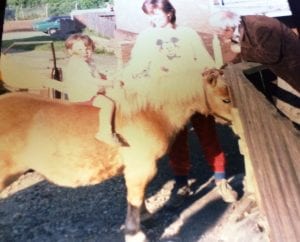Specimen of the Week 316: Horse skull
By Dean W Veall, on 10 November 2017
Hello Specimen of the Week fans, Dean Veall here. This week I am sharing a specimen I have a great affinity for as I was once a proud owner of a breed of this Ordinary Animal as a child and have loved them ever since. Specimen of the Week is…….
**Horse Skull**
A story of toes
The modern domesticated horse, Equus ferus caballus, along with the only true wild species Przewalski’s horse, Equus ferus przewalskii, make up the two subspecies of ‘wild horse’ Equus ferus. Equids such as horses (including zebras and donkeys) together with tapirs and rhinos, make up the last three remaining families of an order of hoofed mammals that are characterised by having an odd number of toes. The evolutionary story of equids starts off in the forest with a fox sized ancestor Hyracotherium, which walked on several spread-out toes some 45 million years ago. As the habitat and climate changed, the descendants of Hyracotherium moved out to grasslands. A lifestyle out of the cover of the forest determined a need to be able to outrun predators. Over time ancestors of the modern horse evolved longer limbs and lost several toes with the middle toes becoming more robust allowing the animal to walk on a single toe helping them achieve ever great speed. Recognisably modern horses first appeared some five million years ago capable of reaching speeds of up to 40km/hr.
My little (Shetland) pony
My story with horses begins at the age of three with my own pony, a Shetland pony called Ginger. I adored Ginger and he stayed with us long after I outgrew him and moved on to more size appropriate horses. Despite their reputation of being bad tempered, I remember Ginger as being an affectionate (and patient) horse. I moved on to bigger horses as I got older and in my teens showed my Grandad’s Welsh cob mare competitively at shows such as the Royal Welsh Agricultural Show and yes, I am the proud owner of a few rosettes.
Whistlejacket

Whistlejacket By George Stubbs – http://www.nationalgallery.org.uk/paintings/george-stubbs-whistlejacket, Public Domain, Link
Of the 2,300 paintings at the National Gallery, George Stubbs’ MASSIVE 18th Century painting of the Marquess of Rockingham’s racehorse Whistlejacket is by far my favourite. You can keep your Sunflowers, your Turners and your Rembrandts, I’ll have the almost life size painting of a horse please.
Extreme breeding
Since horses were first domesticated in Central Asia around 5500 years ago, we have bred for horses for a variety of characteristics that suited our needs, whether it was for work creating massive draught breeds like the Shire horse or for racing like the thoroughbred. Today there are around 350 recognised breeds of the domestic horse and just like breeding in dogs that have given us pugs and bulldogs, horses have been subjected to extreme examples of breeding. This extreme breeding hit the news over the last two months with the unveiling of El Ray Magnum a young Arabian horse that appeared to have concave or dish-like profile. The unveiling of this animal proved shocking with many vets expressing their concern that such a skull deformity would inevitably cause breathing difficulties for the horse and is a more significant risk than with dogs as horses can only breathe through their noses.
Horses are amazing and not really that ordinary
Our latest exhibition, The Museum of Ordinary Animals, features some of the boring beasts that have changed the world. The exhibition is by no means exhaustive and features some of the stories that researchers here at UCL have been working on. Horses, unfortunately, did not make the exhibition ‘cut’. For this blog I’ve chosen to take a bit of a personal take on these animals but I could have written about how horses have had arguably the biggest impact on our civilisation. From warfare to sport to entertainment to cultural iconography to the huge variety of work we have put them to, our story wouldn’t be complete without horses. Oh and they dance:
 Close
Close



